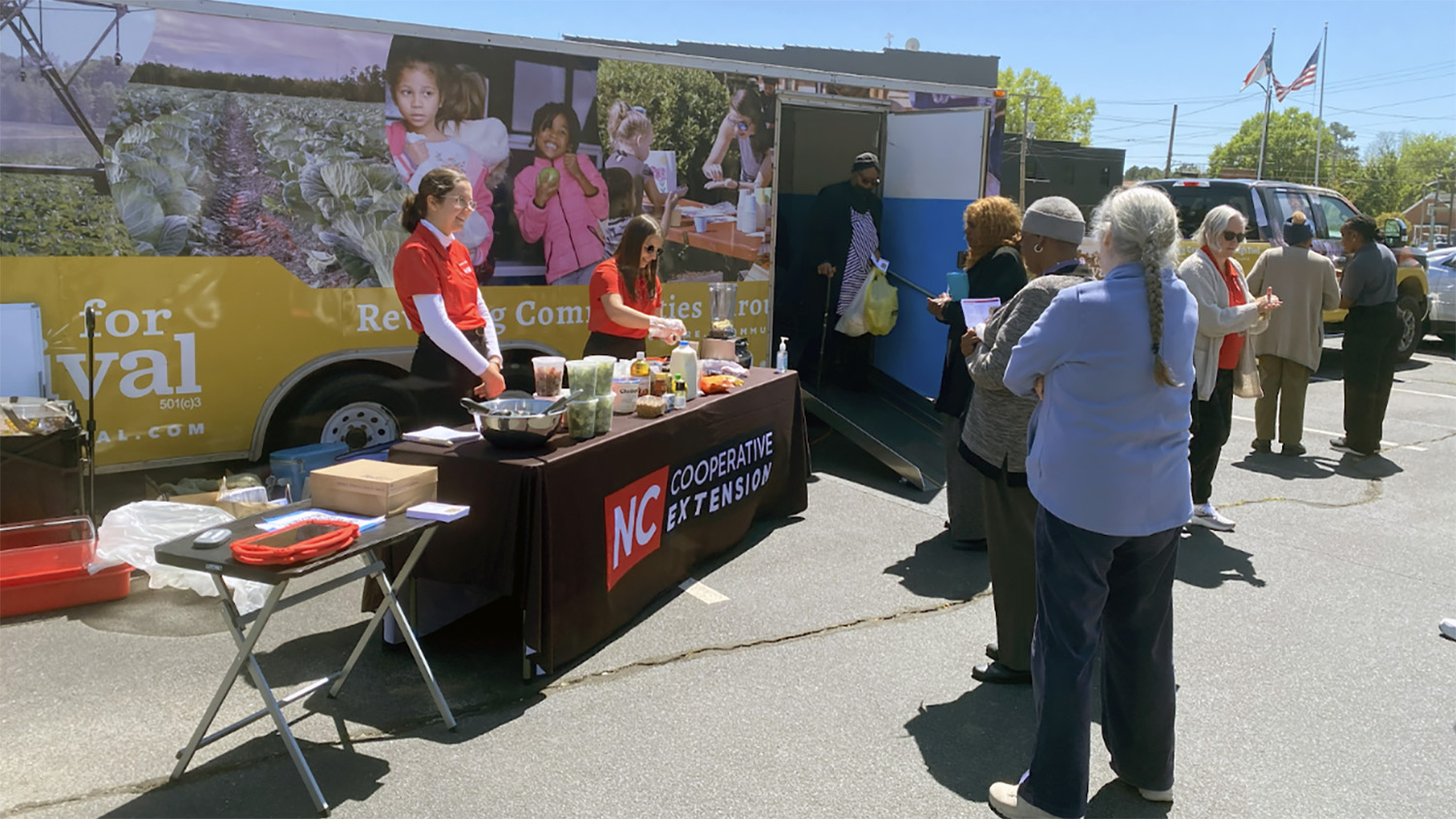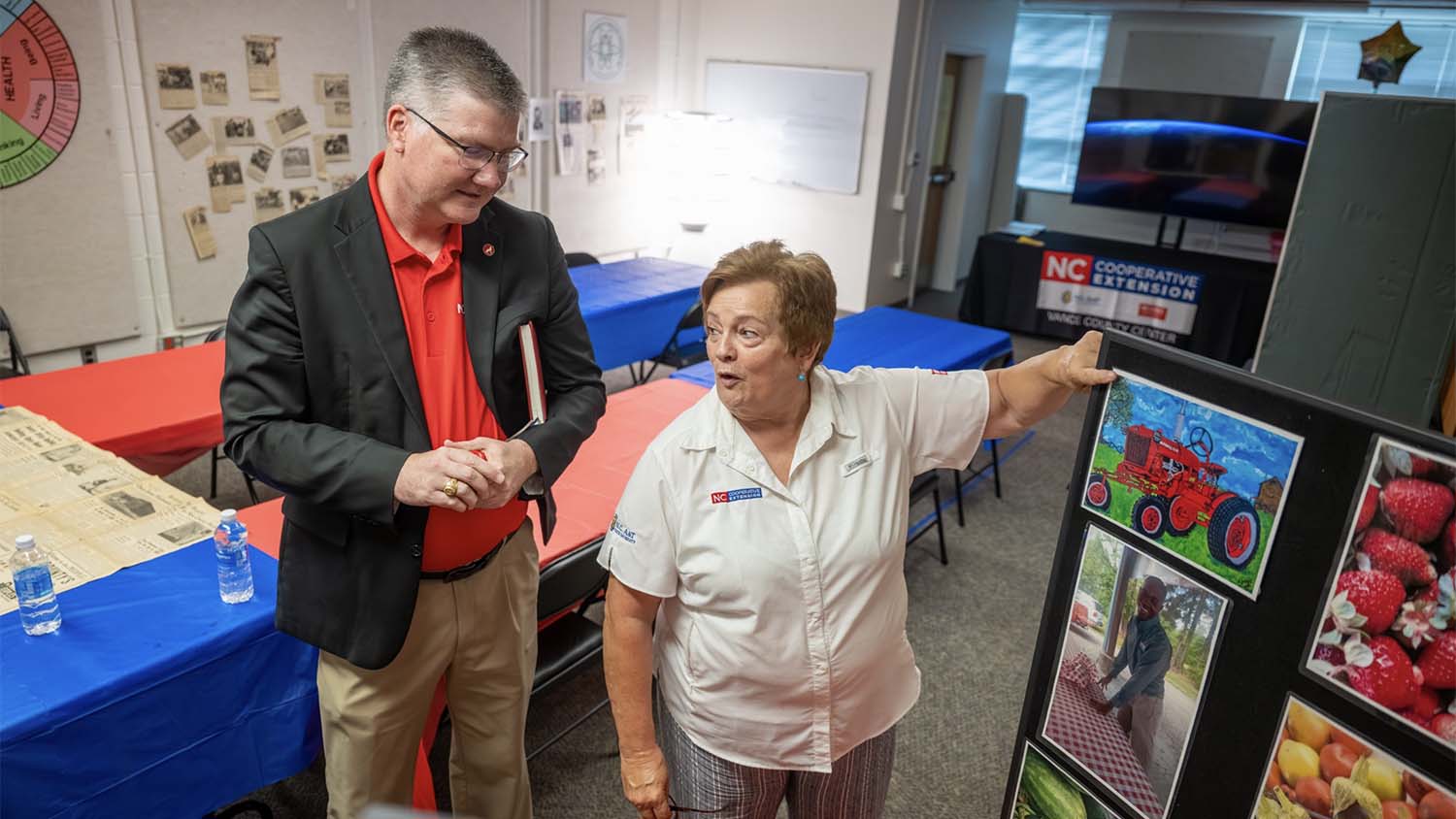Farming the forest: CALS expert helps landowners grow crops beneath the trees
For property owners looking to find ways to earn money from their forested land, forest farming can be a promising alternative – or addition – to harvesting the trees. And for years, Dr. Jeanine Davis has been helping these landowners make the most of that promise.
Based at the Mountain Horticultural Crops Research and Extension Center, Davis is an associate professor of horticultural science and a Cooperative Extension specialist in N.C. State’s College of Agriculture and Life Sciences.
Davis’ work focuses on optimizing organic production and introducing and developing new crops, and she is considered one of the nation’s leading experts when it comes to producing medicinal herbs in the shade beneath a forest’s treetops.
Davis co-wrote the book Growing and Marketing Ginseng, Goldenseal and Other Woodland Medicinals, and she is among the national Cooperative Extension educators who contribute to a new website on forest farming (http://www.extension.org/forest_farming). The site focuses on information about high-value non-timber forest products, covering such topics as startup, best practices, markets and policies.
As the site explains, forest farming involves cultivating and managing understory crops in an established or developing forest. From forest crops, “many parts are harvested, including the roots, tubers, leaves, bark, twigs and branches, the fruit, sap and resin, as well as the wood,” the site adds.

Medicinal herbs are probably the most popular products of forest farming, Davis says, because they can bring high prices. Wild-simulated ginseng, for example, can generate more than $20,000 per half-acre after nine years, but it is hard to grow, in part because poaching is a significant problem.
There are plenty of other alternatives, she adds, including foods such as Shiitake mushrooms, creasy greens, honey, nuts, berries, and the wild leek known as ramps. Decorative and craft-based products – things such as pine-needle baskets, wreaths made of vines, beeswax candles and evergreen garlands – can also be made from materials produced in a forest.
Davis sees interest in forest farming from three main groups: “There are established farmers who are interested in just finding a new crop. For so many of our farmers in western North Carolina, a big portion of the land is in forest, and maybe there’s a big sloped wooded area that they have to pay taxes on so they are wondering if they can make some income from it,” she says.
“We also have new people who have moved into the region, bought some land and are interested in farming but haven’t tried it before. They see this as a way to get involved on a small scale,” she adds. “And then we have folks who own just a small piece of wooded land and who want to make a little bit of income as a sideline to their regular jobs.”
Being successful requires not only knowing how to produce and harvest woodland crops but also a willingness to work hard at marketing. “You have to work on building relationships with buyers, and for some people, that’s a very difficult job,” she says. “You have to do some homework. You have to learn about the industry, read some books, go to a few conferences. You also have to network and make connections.”
Growers also need to have patience, Davis says.
“When I do presentations on forest farming, I keep bringing up this point: When you start out in this, you have to look at it as you would any other small business,” she says. “If you were going into small business, how long would you expect it to be before you break even or make some money? Many people will put up their hands and say five years.
“It’s going to be the same way with this: It’s going to take a while, and a lot of people don’t have that kind of patience or the financial resources to wait that long.”
Those who do venture into forest farming can produce income while they are waiting on trees to become mature enough to harvest for lumber, or they can choose to focus solely on understory crops and preserve the trees for their ecosystem benefits, Davis says.
Forest farming is distinct from – and, in most cases, preferable to – wild crafting, the harvest of woodland plants that occur naturally. With forest farming, growers can provide more control over the quality and, in the case of botanicals, the potency of the plants, Davis says.
Cultivating woodland crops also takes some of the pressure off of rare and endangered plants. Indeed, when Davis started her work with woodland botanicals in the late 1980s, goldenseal was considered an endangered species in North Carolina, but it was taken off the state list about two years ago.

“I like to think we were somewhat responsible for taking the pressure off the wild populations,” Davis says. “We worked really hard with that plant to get consumers and manufacturers to understand that cultivated material is more valuable than the wild, because when we grow it we have more control over the quality and the potency of those plants, whereas if you just harvest from scattered wild populations, there will be inconsistencies.
“Wild plants growing in one location might not get good nutrition, while plants growing in another location might not get very much light,” she adds. “With forest farming, you have more control over the growing conditions and can get a product that’s more uniform.”
Forest farming is one aspect of western North Carolina’s natural products industry. With funding from Golden LEAF, Cooperative Extension is working with a number of agencies to help brand the region’s natural products.
“We want people to understand that if they are buying branded products from this region, they are buying high quality products,” she says.
With that grant funding, Davis has two projects, one involving Chinese herbs and the other, woodland herbs. Extension’s “major part of that is training farmers – teaching them how to grow these crops, how to harvest them and how to dry them,” Davis says.
When it comes to promoting and supporting forest farming and the larger natural products industry in Western North Carolina, Davis and Cooperative Extension have plenty of partners, especially the North Carolina Natural Products Association, a non-profit organization dedicated to conserving, cultivating, sustainably harvesting and producing N.C. grown medicinal plants. Other key players include Asheville-Buncombe Technical Community College, Advantage West, the Bent Creek Institute, the U.S. Forest Service, and companies such as Gaia Herbs.
In part because of these organizations’ impetus, interest in forest farming in Western North Carolina has risen since Davis expanded her program from commercial vegetable production to include herbs in the late 1980s.
“For so long, the woodland botanical industry in this area was all wild harvesters. You see photographs of old mountain men sitting next to a big pile of wild ginseng,” she says. “That’s the industry I came into when I started.
“But that industry is maturing. Today, we have a cultivated herb industry that’s providing high quality, standardized products. It’s an industry that’s been hidden, but it’s becoming an upfront industry that’s very evident in Western North Carolina,” she adds. “I’m really curious to see what the next 10 years are going to bring.”
— Dee Shore
- Categories:


